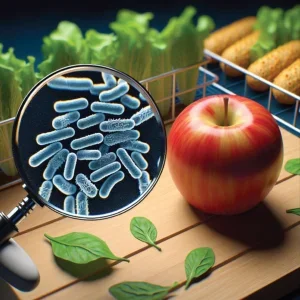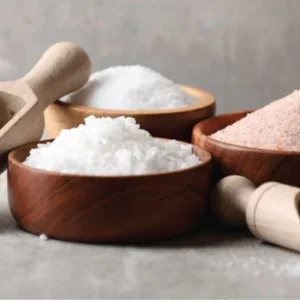
The global clean label ingredients market is expected to be valued at $51.14bn by 2024, according to ResearchandMarkets. This is so that it can meet the growing consumer demand for clean label food and consumer packaged goods. According to a 2018 online survey of 3,000 consumers in the US and Europe by Beneo, clean labels and natural ingredients were more important when making a purchasing decision than brand recognition and product descriptions.
Meanwhile, LEK research found that more than 60% of consumers prefer products described as having no artificial ingredients and no preservatives, and as being ‘all-natural’.
Essentially, clean label means having transparency on the ingredients list of a product, making it with as few ingredients as possible, and ensuring those ingredients are items that consumers recognise and think of as healthy. To put it simply: ingredients that consumers might use in their homes.
Heavy metals, pesticide residues, plastics and other chemicals of concern make their way into many bought foods, so it is a particularly lucrative market for companies that are able to do away with those and harness clean label’s potential.
Byword for trust
It has now become closely associated with trust among manufacturers of food. And the Covid-19 pandemic’s quarantines, travelling constraints and social distancing measures have likely only increased the desire of consumers to know exactly where their foods come from and what it consists of.
Nonetheless, despite this challenge, new technology and food science are providing innovative solutions to sate growing consumer interest. According to LEK, some of the key ingredients currently dominating the clean label food market include:
■ Hydrocolloids: Hydrocolloids, consisting of gums and pectin, are increasingly being used to provide texture and particle suspension while helping products maintain a clean label, creating steady growth in the global hydrocolloids market. While gums have been on the market for quite some time, ‘clean’ gums – such as gellan, acacia and guar – are becoming popular thickening and stabilising agents, often taking the place of carrageenan, which has come under fire following studies that indicate it could cause cancer when in non-food-grade form.
■ Natural mould inhibitors: The shift to clean label ingredients has made extending the shelf life of bakery products a challenge for consumer packaged goods companies. For example, calcium propionate, a chemical mould inhibitor, does a great job at preserving freshness in bakery products, but manufacturers have had difficulty finding a natural alternative. Some formulators have found a solution by replacing artificial mould inhibitors with naturally fermenting alternatives like sorbic acid, which match the functionality and neutral flavour profile of calcium propionate.
■ Food enzymes: Enzymes manage every biochemical reaction in the human body. And thanks to food science, enzymes play a vital role in a variety of foods, improving texture, visual appeal, shelf life and healthiness. The food enzyme market is expected to grow at around 7–8% per year (according to LEK’s own numbers), fuelled not only by cleaner eating but also by demand for premium and healthy foods, such as gluten-free bread, and the increased use of enzymes in food processing.
■ Fruit and vegetable pieces and powders: Processed fruits and vegetable pieces and powders give food and beverages the taste and feel of fruits and vegetables, while providing sweetness and colour. They come in many different forms, fortify products with vitamins, minerals and antioxidants, and contribute to a health and wellness lifestyle. And regulatory changes, particularly in the US, are expected to add to growth as fruits will have to take the place of other ingredients when manufacturers are required to identify added sugars in their labelling.
Rob Wilson, LEK
Certain food and dietary supplement-quality scandals have dented consumer trust and intensified scrutiny of the integrity of the supply chain. In line with growing concern for the health of our planet and the welfare standards of animals, vegan diets have seen increased popularity in recent times.
Plant-based, naturally-sourced ingredients are seemingly a good fit for the agenda, but the use of such materials exposes brands to new challenges. Unfortunately, plant-based ingredients can sometimes be contaminated with substances such as heavy metals, pesticides, mycotoxins and plastics, or they are adulterated with undeclared compounds and non-compliant plant species.
As part of its ongoing efforts to increase transparency, a report from the Clean Label Project looked at ingredients found in certain plant-based protein powders from the US, finding that some were contaminated. This caused controversy among protein manufacturers as they questioned the validity of the study and its impact on the market.
To alleviate these fears, the Council for Responsible Nutrition (CRN), the leading trade association for the dietary supplement and functional food industry, issued the following statement as a robust response. “The fact that this study allegedly detected contaminants in higher-than-acceptable levels is concerning to CRN, but, with the limited information that was disclosed, we are unable to decipher the facts. CRN has some reservations about the conclusions and data analysis that should also be considered.
“A detectable level of a contaminant is not necessarily an unsafe level – it merely means that the instrumentation is sophisticated enough to detect it.
“In the interest of its mission of increased transparency, the Clean Label Project should provide insight into how its product rating system is quantified. Its star rating system appears to be subjective and fails to give consumers the information to make informed purchasing decisions.
“It is not surprising that plant-based protein sources may have detectable levels of certain naturally occurring compounds as plants naturally absorb minerals from the soil in which they grow.
“All dietary supplements are required to meet quality standards, and those that do not meet requirements established by good manufacturing practices are subject to enforcement action by the Food and Drug Administration.”
Safely clean label
In order to maintain high standards, Clean Label Project certification signifies that consumers can trust products. The certification is important given concerns about the negative health effects of contaminants.
“At the Clean Label Project, we believe that sometimes what’s not on a label is what matters most,” Jaclyn Bowen, executive director of the Clean Label Project, stated in June. “The long-term threat of cancers and reproductive disorders linked to industrial and environmental contaminants exposure have largely gone unnoticed, untested and, therefore, unregulated in food and consumer products – until now.
“Clean Label Project certification addresses that gap by building on the strictest regulation in the US, [and] by evaluating products to protect consumers from contaminants and chemicals of concern.”
Looking to the future for food ingredient companies, the key to success – and, ultimately, survival – is being aware of the latest clean label developments, a thought mirrored by Peter Walter, managing director at LEK. “For investors,” he said in a press statement from February, “deals are abundant. Those in private equity with a tight grasp on where to position themselves to play in the ingredients space will stand to profit the most.”
60%
Consumers that prefer products to contain no artificial ingredients or preservatives.
LEK
State of play in the non-thermal processing market
The global non-thermal processing (NTP) market is expected to reach $1,611.68bn by 2025, from $826.88bn in 2017, growing at a CAGR of 8.7% during the forecast period of 2018–2025. The upcoming market report contains data for the historic years 2015 and 2016, the base year of calculation is 2017 and the forecast period is 2018–2025.
A pulsed electric field is a high intensity of electricity passing through variable electric fields in which the food is stored. It is the predominant NTP used for acid-based fluids or fruit juices. This process is combined with mild heating, which improves the efficiency of microbial inactivation and prolongs the shelf life of foods. Microbial inactivation is a function where NTP is extensively used for food preservation. This process notably assists in extending the shelf life of food products. Irradiation is an effective NTP technology used for microbial inactivation. In this process, food products undergo high-frequency radiation treatment that leads to the disintegration of the cells of microorganisms.
The application of NTP technology is constantly increasing in the food industry. The lack of heat in this technology offers several benefits, such as the sensory and nutritional attributes of the product remaining unaffected, which helps in yielding products that are of better quality when compared with traditional processing methods. The frozen food market is considered to be one of the leading and most dynamic sectors in the food industry. Major players in the NTP market are making numerous developments, such as the launch of new products and the opening of new research, development centres and new plants.
This contributes significantly to the growth of the NTP market. Many top companies have been involved with export markets, and have also built brand recognition in overseas ones. Moreover, the need for retention of nutrients and sensory attributes in food has prompted the NTP market to invest in extensive research and development activities to optimise the process and make it compatible for usage in multiple food applications. The major market drivers and restraints are:
- the trend of novel technologies over conventional ones
- retention of nutrients and sensory attributes of food
- energy-saving ‘green’ technology
- HPP technology, which speeds up packaged food processing to meet growing demand
- misconceptions leading to regulatory compliance for labelling irradiated food
- high capital investment.
Source: Data Bridge Market Research






